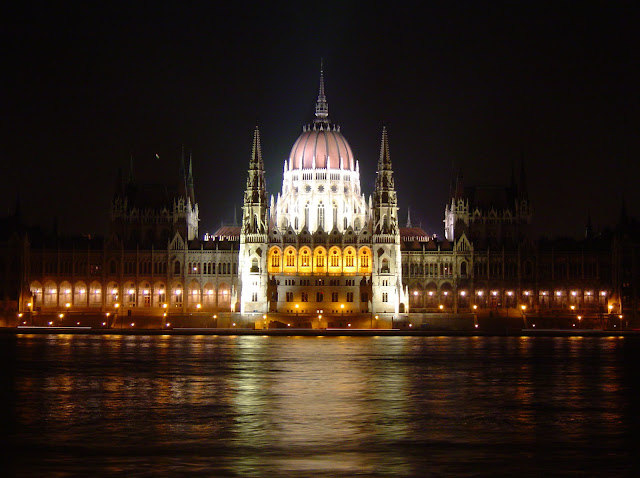10 Famous Places in Budapest Hungary
Budapest – Hungary
Hungary is a country named "Pearl of Central Europe" with the oldest history in Europe, has been ruled by many different regimes such as the Romans, Ottomans, Mongols, Hungary, Czechs, Soviet Union. Roman architecture, splendid residences, medieval churches, palaces, magnificent cathedrals and ancient castles have always stood the test of time, attracting foreign visitors to admire and discover. Becoming the 30th most popular and ideal destination in the world attracts millions of tourists a year.
1. Liberty Bridge
The shortest bridge in Budapest connecting Buda with Pest across the Danub River, in the capital Budapest. The bridge with exquisite ancient architecture, this bridge has always been voted in the top of architectural masterpieces of the world. On top of the four iron pillars of the bridge is a bronze statue of the bird Turul, a type of eagle in Hungarian mythology and this bird also became the Hungarian national name.
2. Square hero
Hero Square is one of the most visited areas in Budapest and was the center of the activities of Hungary's thousand year anniversary in 1896.
The Hero Monument is located in the middle of the square, featuring a Millennium Monument and two curved arc arches. The monument is a white pillar as tall as 36m, on top of it is the Archangel Gabriel. The two sides are lined with many famous figures in Hungarian history including 7 famous kings of Magyars and other important national leaders, as well as the Tomb of the unknown soldiers. The statues symbolize war and peace, work and welfare as well as knowledge and glory.
3. Hungarian Parliament House
One of Europe's most famous and largest Houses of Parliament is located in Lajos Kossuth Square, on the east bank of the Danube. The building, built in Gothic style, resembles London's Westminster Palace. With the superficiality, the majesty of the whole and the delicacy in the details, the Hungarian Parliament - the UNESCO World Cultural Heritage - has surpassed the usual framework of an administrative and major center. to become a symbol of glory of the Hungarian people, which has suffered a lot in the past.
4. Gellért bath
This Budapest city is a paradise of hot mineral baths. This is the most famous hot spa bath in Europe. It has up to 118 sources of hot water and natural mineral water, temperatures from 21 to 78 degrees, which is effective in curing many diseases. 70 million liters of natural mineral water supply to the baths here, most notably the Gellért bath located right at the hotel Gellért, a hotel - the ancient castle is considered the most royal of Budapest.
In the winter, when the cold air is covered, nothing is more happy than soaking in a warm, relaxing natural mineral water pool.
5. Royal Castle
Located on a hill named Castle. Buda Palace is a castle full of history and is the complex of palaces of Hungarian kings in Budapest. The building was built in the style of the Middle Ages. This place was dubbed the "Paris of Eastern Europe".
6. Ancient cave beneath the Pada palace
Deep beneath the towering stone walls of the 13th century Puda Palace, Buda Labyrinth lurks in it small alleys and pitch-black corridors along with an extremely dark history of Pada castle district in Budapest capital, Hungary.
Here, the dead skeletons have revealed fierce feats, in recent times this cave population has been allowed to open to the public, tourists to visit, learn thanks to that. which helped the palace show off its magnificent beauty.
7. Matthias Church
This basilica is over 700 years old, built in the post-Gothic style of this period as soft decorative motifs like a blazing fire. It is not only a church, but also a Church Art museum, including medieval stone carvings, famous murals by Hungarian painters, and sacred relics. sacred and replica jewels of the coronation and royal crown of Hungary.
8. St. Stephen's Church
St. Stephen's Church is a Roman Catholic church in Budapest, Hungary. It is named in honor of Stephen, the first king of Hungary (975-1038), who was canonized in 1083.
The statue of St. Stephen is located within the grounds of St. Stephen's Church. The statue vividly depicts the king Stephen of Hungary. It clearly shows the talent as well as the efforts of the manufacturer and symbolizes the respect for this king.
9. The derelict shoes on the banks of the Danube
The sculptor created 60 pairs of iron shoes of that era and attached them to the rock on the banks of the river, and over the years, the shoes became rusted, increasing the mournful look. This is the most moving memorial today, honoring the Jews killed by pro-Hitler factions in Budapest in 1944-1945. The Jews were driven to the banks of the Danube and were forced to take off their shoes on the banks before being shot into the river to allow their bodies to drift away.
10. The Statue of Liberty
The statue on the hill of Gellért, nearly 40 meters high above is a 14-meter tall woman, holding a laurel wedge, on a 29-meter-high pedestal on the pedestal symbolizing those who have died for independence and freedom. Today in Hungary. After World War II, the Hungarian people were extremely grateful for the devoted support of Soviet brothers in the battle, helping the country to be free from oppressive Nazi influence.















0 nhận xét